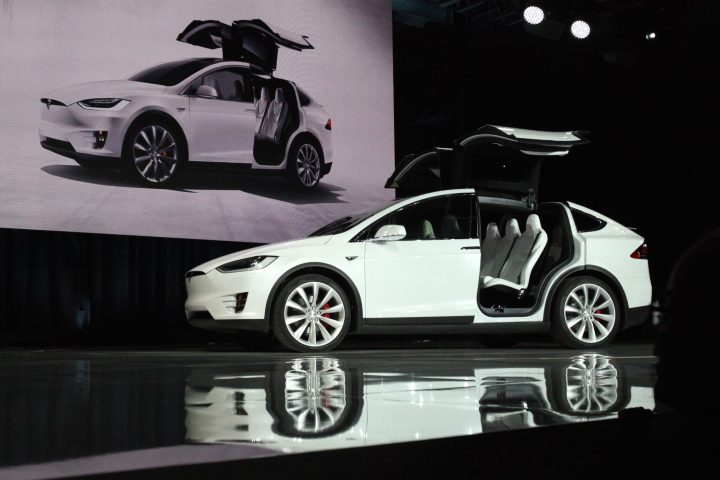The Future of Energy
By Chris Cheng 程鵬

In 2006, Elon Musk published his “Master Plan” for the fledgling Tesla Motors, Inc., one now in its final stages [1].
- Create an expensive, low volume car
- Use profits from Step 1 to create a medium volume car
- Use profits from Step 2 to create an affordable, high volume car
- Provide solar power
Tesla has done well for itself. In the past 10 years, it’s accomplished Steps 1-3, churning out unprecedentedly popular electric car models: the Roadster, the Model S, and finally the Model 3. Along the way, it’s even turned a profit in its most recent fiscal quarter [2]. But Step 4 will prove to be the most difficult challenge of all: providing solar power.
Sustainable energy is an elusive concept. In Hong Kong, where the Model S was the Special Administrative Region’s top-selling sedan in 2015, one might think upon observing a Tesla silently traversing Hong Kong’s roads that their electrically-powered engines exemplified that very concept [3]. One would be wrong.
In 2012, 75% of the electricity generated in Hong Kong relied on coal and natural gas (at 53% and 22% shares, respectively) – natural resources which are very much finite and unsustainable that also pollute the environment with CO and CO2 emissions [4]. Meanwhile, the Hong Kong government has publicly announced their plans to raise production of electricity from natural gas to 50% share by 2020 [5]. Make no mistake: sustainable energy will not proliferate in Hong Kong anytime soon, no matter how many fancy electric cars are purchased and driven.
Fortunately, the private sector has not been idly watching. While Elon Musk has been working on a solar paneling initiative, the California Institute of Technology has been working on a different kind of “solar fuel”: one leveraging artificial photosynthesis. The Joint Center for Artificial Photosynthesis (JCAP), created in 2010 by United States Secretary of Energy Steven Chu, aims to create fuels using only sunlight, carbon dioxide, and water by simulating natural photosynthesis’ following steps [6]:
- Splitting water into hydrogen and oxygen
- Reacting hydrogen with CO2 to produce carbohydrates
Instead of producing carbohydrates, artificial photosynthesis entails using the same reactants to instead produce energy-dense liquid fuels. If these fuels were made from carbon dioxide captured from the atmosphere, the process could achieve carbon-neutrality, adding no new emissions of greenhouse gases. Impeding the creation and proliferation of this technology, however, is the complexity of the procedure: it involves six different chemical steps, and no known catalyst efficiently and selectively converts carbon dioxide into fuel. The U.S. Department of Energy has therefore refocused JCAP’s efforts away from creating commercially-viable energy producers and to instead research the basic scientific processes necessary to make artificial photosynthesis possible, in a move described by former Secretary Chu as “not what I had in mind [for the JCAP].”[6]
Meanwhile, nuclear energy has been used for nearly half a century , but displays several critical drawbacks. The expenses of constructing a power plant, compounded with the risk of using radioactive material, have inhibited wider use of such a method of energy production. Indeed, in Hong Kong, nuclear production of electricity has been fixed by the government at a 23% share for the foreseeable future. [5]
At the Shanghai Institute of Applied Physics in mainland China, however, a new type of nuclear reactor is being built: one using thorium and molten salt that is, in theory, “fail-safe”. In such a reactor, an intricate system of pipes would carry a molten salt that cools the reactor but also carries heat to drive a turbine and make electricity. This design makes it impossible for an accident on par with those at Chernobyl and Fukushima to occur, eliminating the need for expensive safety systems in the reactor. Compounded with China’s vast thorium resources, this reactor has tremendous scalable potential for China’s clean energy future: a fact the Chinese government has recognized, investing around two billion RMB over the last five years in this technology. The Shanghai Institute aims to launch a commercial-scale nuclear power plant of this nature by 2030.[1] [7]
Undoubtedly, whether sustainable energy emerges from a solar, nuclear, or hitherto unknown source, it remains clear that sustainable energy production does and will face many obstacles ahead. To everyone in Hong Kong driving or admiring the new Tesla Model X: don’t be deceived by its sleek design. When it comes to clean energy, there’s still a lot of work to be done.
References
[1] Musk, E. The Secret Tesla Motors Master Plan. Tesla (2006). Retrieved from https://www.tesla.com/blog/secret-tesla-motors-master-plan-just-between-you-and-me
[2] Higgins, T. Tesla Generates A Profit. The Wall Street Journal (2016). Retrieved from https://www.wsj.com/articles/tesla-posts-second-profitable-quarter-ever-1477513454
[3] Soo, Z., Ng, N. With Tesla’s Model S Now Hong Kong’s Top-Selling Sedan, Chief Elon Musk Predicts City to Become World Leader in Electric Vehicles. The South Morning China Post (2016). Retrieved from http://www.scmp.com/news/hong-kong/article/1905236/teslas-model-s-now-hong-kongs-top-selling-sedan-chief-elon-musk
[4] Public Consultation On Future Development of Electricity Market Launched. Hong Kong Government Press Release (2015). Retrieved from http://www.info.gov.hk/gia/general/201503/31/P201503310641.htm
[5] Report on the Public Consultation on Future Fuel Mix for Electricity Generation in Hong Kong. Hong Kong Government Report, Environmental Bureau (2014). Retrieved from http://www.enb.gov.hkdefault/files/en/node2605/Report_on_the_Public_Consultationon_e.pdf
[6] MIT Technology Review, Vol. 119, No. 5, p. 117.
[7] MIT Technology Review, Vol. 119, No. 5, p. 132